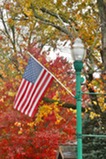
Give your child a day of theatre education and holiday fun! Students will explore a song and dance from holiday classics and take three different classes in acting, singing, and dance.
With each registration for this fantastic opportunity, Derby Dinner Playhouse will email you a gift certificate that you can print out, personalize, and tuck under the tree!
The workshop will be December 30 or 31 and will have two separate session times based on age groups.
Morning Session:
9 a.m.-12 p.m.; AGES 5 to 9
Afternoon Session:
1-4 p.m.; Ages 10 to 17
For info:


Applications are now open for the Creative Forces Community Engagement Grants.
This national program engages military-connected individuals through experiences of art or art-making. These grants of $10,000 to $50,000 support community arts programs that create opportunities for creative expression, resilience, social connectedness, and successful adaptation to civilian life.
Creative Forces is a program of the National Endowment for the Arts (NEA) in partnership with Mid-America Arts Alliance (M-AAA). Grant applications are open now and close January 15, 2025.

Indiana Pork was a proud sponsor of the 2024 World Food Championships, which took place this month in Indianapolis. Through its sponsorship, Indiana Pork aimed to promote proper cooking temperatures of pork, educate youth competitors about pork, and engage with some of the best-known Indiana chefs in the restaurant and catering industry.
The World Food Championships is an annual culinary event that attracts thousands of competitors and food lovers from around the globe. This sponsorship offered Indiana Pork a unique opportunity to showcase pork as a versatile, delicious, and nutritious protein that enhances any meal, whether prepared in home kitchens or by expert chefs on a competitive stage.
As the sponsor of the Junior Chef competition, each team was provided a pork tenderloin from Indiana Pork and had 90 minutes to prepare a dish using pork tenderloin that captured the essence of "healthy fresh." Contestants were allowed to use other ingredients that they chose but had to supply those ingredients themselves.
Contestants spanned the ages of 9-17 and traveled from all across the country to compete. Indiana teams were well represented during the awards ceremony. Carmel High School senior Julia Hohne and sous chef junior Maddie Arroyo finished first, receiving $1,500 for their pork gorditas. Brownsburg junior Claire Siglar and sous chef Mooresville junior Elizabeth Starr took third place and received $400.
Matt Paschen, Cass County pig farmer and chair of the Indiana Pork promotions committee, shared the organization’s excitement about participating in the event. “We’re thrilled to support an event like the World Food Championships, which aligns perfectly with our mission to elevate the profile of pork in the culinary world. By connecting directly with chefs, influencers, junior chefs, and consumers, we were able to highlight how pork provides flavor, nutrition, and creativity in cooking.”
The World Food Championships is recognized for its high-energy atmosphere and for the first time, was held in Indiana at the Indiana State Fairgrounds Indiana Pork’s sponsorship included multiple cooking demonstrations by local chefs, featuring pork loin recipes that were easy to make for an at-home chef.
By sponsoring the World Food Championships, Indiana Pork continues its efforts to promote the exceptional taste and value of pork to a broader audience while supporting chefs who create amazing dishes for their restaurant attendees.
For more information about Indiana Pork, please visit www.indianapork.org.

Comprehensive Trail System Promotes Local Connectivity, Active Living
Align Southern Indiana, in collaboration with the Our Southern Indiana Regional Development Authority, is proud to announce the completion of the Regional Trails Master Plan. The plan, which aims to create a comprehensive trail system connecting six counties – Clark, Floyd, Harrison, Jefferson, Scott, and Washington – was funded through the state’s Regional Economic Acceleration and Development Initiative (READI), as well as grant initiatives coordinated by Align Southern Indiana.
The regional trail system will connect 22 communities within the six counties to popular destinations, including cultural and historical sites, local, regional and state parks, and neighboring regions. Objectives include an emphasis on regional connections, greater safety for guests, and ultimately, promoting more active, healthy living throughout the region.
“This plan represents a collaborative effort to improve the quality of life for Southern Indiana residents,” said Dr. Rita Shourds, President and CEO of Align Southern Indiana. “By connecting our communities, we’re fostering opportunities for outdoor recreation, economic development, and healthier lifestyles. I am proud of the work our team has done to bring this vision to life, and we look forward to seeing the trails take shape in the years ahead.”
The Regional Trails Master Plan is the result of a seven-month planning process designed to increase regional connectivity, safety, and awareness through a network of trails that link communities to key destinations, including cultural and historical sites, parks, and neighboring regions. The plan outlines future projects that can be implemented over time as funding becomes available, with an overall goal of promoting active, healthy living throughout the region.
The planning process included significant community engagement, with open houses held in each county, as well as an online survey that garnered over 870 responses. The input gathered from residents helped shape the plan’s recommendations, with key priorities and projects identified for each county. Align Southern Indiana’s Trails Team, along with representatives from each county, worked closely with consultants to ensure the plan reflects the unique needs and goals of the region.
About Align SI:
Align Southern Indiana was founded in 2017 to actively facilitate a shared regional process that aligns resources, addresses needs, and produces sustainable solutions resulting in Clark, Floyd, Harrison, Scott, and Washington counties in Southern Indiana achieving its potential as a best place to live, work, and play. Foundational areas of focus include economic and talent development, education, regional leadership, quality of life, and quality of place. For more information about Align SI, visit our website at www.alignsi.com.

|
|
|
|
Indiana Capitol Tour Office |
SalemLeader.com
Leader Publishing Company of Salem, Inc.
P.O. Box 506
117-119 East Walnut Street
Salem, Indiana. 47167
Phone: 812-883-3281 | Fax: 812-883-4446
Business Hours:
Mondays through Fridays, 9:00am - 5:00pm
News:
news@salemleader.com
Office:
office@salemleader.com
Publisher:
publisher@salemleader.com
Business
- More Business News
- Go To Guide
- Business Directory
- Auctions
Education
- More Education News
Opinion
- Editorials
- Letters to the Editor
- Columns
- Unsung Heroes
- Days Gone By
- In the Garden
- Guest Columns
- Reader's Poll
- Salem Leader Forum
- Questions and Answers
Church
- Bible Aerobics
- Church News
- Church Directory










